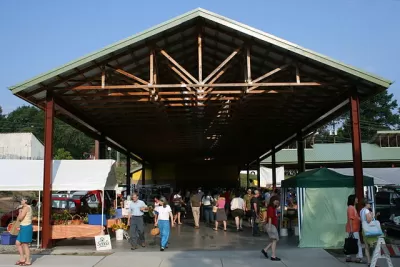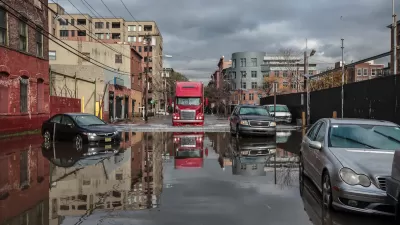New research shows that some U.S. communities are much better than others at attracting grants and financing for community development—even after adjusting for relative need. The numbers are clear, but the reasons for the disparity may not be.

You might think that community development funding in the United States—investments like small-business loans, federal housing grants, tax credits, and investments from community development financial institutions—go to local communities in rough proportion to their need. For example, in any given year, you’d expect communities to receive roughly the same amount of per-family and per-employee lending. And if any communities were prioritized, you’d hope they would be those that have higher levels of poverty and unemployment, as the public sector works to jump-start struggling economies.
As it turns out, that’s not the case. Urban Institute, through a grant from JPMorgan Chase, measured flows of federally sponsored or incentivized community development capital to all U.S. counties with more than 50,000 residents (which accounts for 88 percent of the U.S. population) using data from 2011 to 2015. We tracked funding in four dimensions: housing, small business, impact finance (loans from community development financial institutions and New Markets Tax Credit investments), and other community development programs. The upshot: some communities in the United States seem much better than others at attracting grants and financing for community development—even after adjusting for their relative needs. Here are some of the surprising trends we found:
Large counties get disproportionately more investment than small ones. You would expect that large counties with 300,000 or more residents get a lot more funding than small counties with less than 100,000 residents. But you’d also expect to see that difference go away once you adjust for the difference in size.
FULL STORY: How Successful is Your County in Accessing Community Development Funding?

Alabama: Trump Terminates Settlements for Black Communities Harmed By Raw Sewage
Trump deemed the landmark civil rights agreement “illegal DEI and environmental justice policy.”

Study: Maui’s Plan to Convert Vacation Rentals to Long-Term Housing Could Cause Nearly $1 Billion Economic Loss
The plan would reduce visitor accommodation by 25% resulting in 1,900 jobs lost.

Why Should We Subsidize Public Transportation?
Many public transit agencies face financial stress due to rising costs, declining fare revenue, and declining subsidies. Transit advocates must provide a strong business case for increasing public transit funding.

Wind Energy on the Rise Despite Federal Policy Reversal
The Trump administration is revoking federal support for renewable energy, but demand for new projects continues unabated.

Passengers Flock to Caltrain After Electrification
The new electric trains are running faster and more reliably, leading to strong ridership growth on the Bay Area rail system.

Texas Churches Rally Behind ‘Yes in God’s Back Yard’ Legislation
Religious leaders want the state to reduce zoning regulations to streamline leasing church-owned land to housing developers.
Urban Design for Planners 1: Software Tools
This six-course series explores essential urban design concepts using open source software and equips planners with the tools they need to participate fully in the urban design process.
Planning for Universal Design
Learn the tools for implementing Universal Design in planning regulations.
Caltrans
Smith Gee Studio
Institute for Housing and Urban Development Studies (IHS)
City of Grandview
Harvard GSD Executive Education
Toledo-Lucas County Plan Commissions
Salt Lake City
NYU Wagner Graduate School of Public Service





























